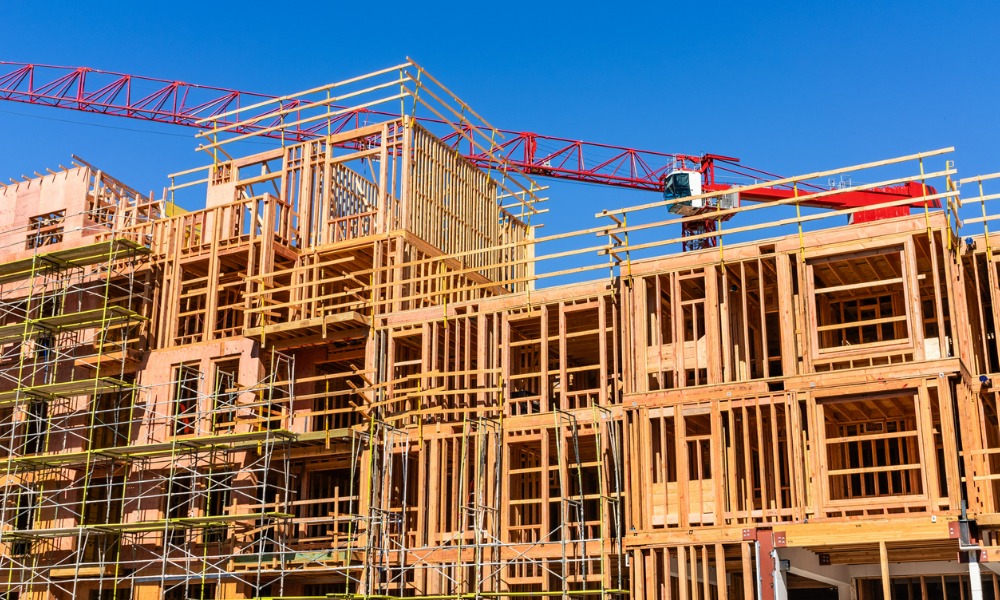Insolvencies in the sector spike by more than 75%

Australia’s construction sector has experienced a sharp increase in insolvencies, surging by over 75% in the past year. Builders are sounding the alarm, stating that they are struggling to handle the workload they took on during the COVID-19 pandemic.
According to the latest insolvency statistics from ASIC, there were 2,117 external administrations recorded for the financial year ending in June 2023, representing a 75.4% jump compared to the previous year, The Australian reported.
Builders constitute a significant portion of the companies facing financial trouble, as their profit margins shrink and the collapse of larger operators ripples throughout the industry. Industry leaders attribute the current state of the sector to the excessive construction projects undertaken during the pandemic-fueled stimulus period.
“It’s generally overheated everywhere. Productivity is way, way down and prices are going up,” Hutchinson Builders chair Scott Hutchinson told The Australian. “The only light at the end of the tunnel is waiting for construction costs to make jobs not stack up, and that’s happening every day.”
Read next: Anger rises after builder collapse
A labour shortage exacerbates the situation, with builders facing challenges in finding skilled workers. Experts predict that more insolvencies will occur as the industry moves forward, with some companies struggling to secure new projects and resorting to cash flow tactics. The residential building sector has experienced a decline in new projects due to rising interest rates, falling house prices, and a bleak economic outlook. Construction insolvencies have increased by 65% compared to the previous financial year, surpassing the overall increase in insolvencies by 10%, The Australian reported.
Rates, rising costs squeeze sector
Construction external administrations accounted for 28% of the total number of external administrations across all sectors. The number of construction companies in administration was double that of the next largest category, which was accommodation and food services. The initial wave of corporate collapses that impacted home builders has now spread to high-rise construction and certain areas of civil building, affecting education and hospital projects.
Developers are now forced to postpone or jeopardise projects due to a combination of high interest rates, rising input costs, and difficulties in securing labour and financing, The Australian reported.
However, there are indications of a potential pickup in the industry as new projects emerge and the housing market shows signs of recovery. While recent contracts offer improved conditions for the local construction market, the industry is still expected to face ongoing challenges as more troubled companies collapse.
Russ Stephens, co-founder of the Association of Professional Builders, predicts a slow-burn scenario, with more liquidations anticipated in the coming months. Stephens said there could be a considerable lag time between builders losing money and collapsing.
“This slowdown is going to catch them out, and that’s the reason why we will see a lot more liquidations over the next six months – it’s going to get worse before it gets better,” Stephens told The Australian. “The sales process can take up to six to 12 months for builders. We are seeing consumers in that process have second thoughts and sit back and wait and see what happens with builders, interest rates and inflation. We are also seeing the amount of new inquiries start to slow down as well. It’s nothing too dramatic when compared to pre-COVID, but in the context of how busy it was during the COVID boom it’s a considerable slowdown on demand.”
Outlook grim
According to Oxford Economics Australia, the outlook for the construction sector is grim, with a forecasted cumulative decline of 215 in total building work over the next three years. The cash rate is projected to reach 4.6% by September and remain at that level until mid-2024, The Australian reported.
Delays, elevated construction costs, and industry uncertainty continue to dampen buyer confidence, leading to a deep residential downturn. Borrowers in the construction sector are seeking advice about their options as the safe harbour rules protecting struggling companies during the COVID era are no longer in place.
Have something to say about this story? Let us know in the comments below.



